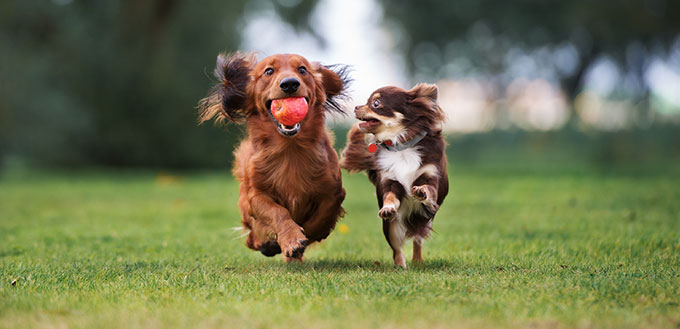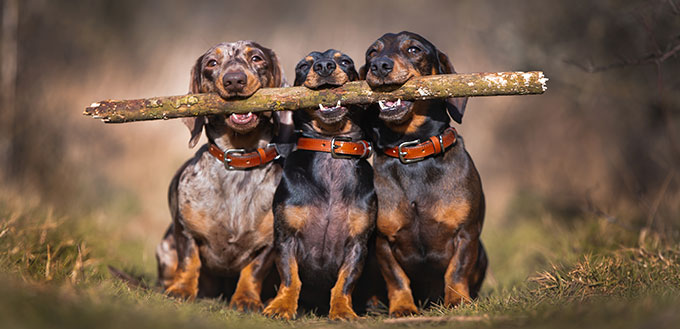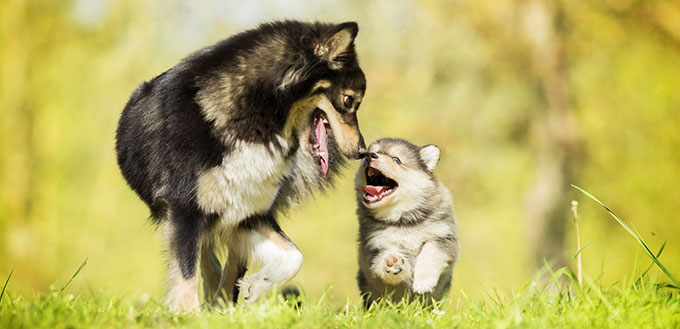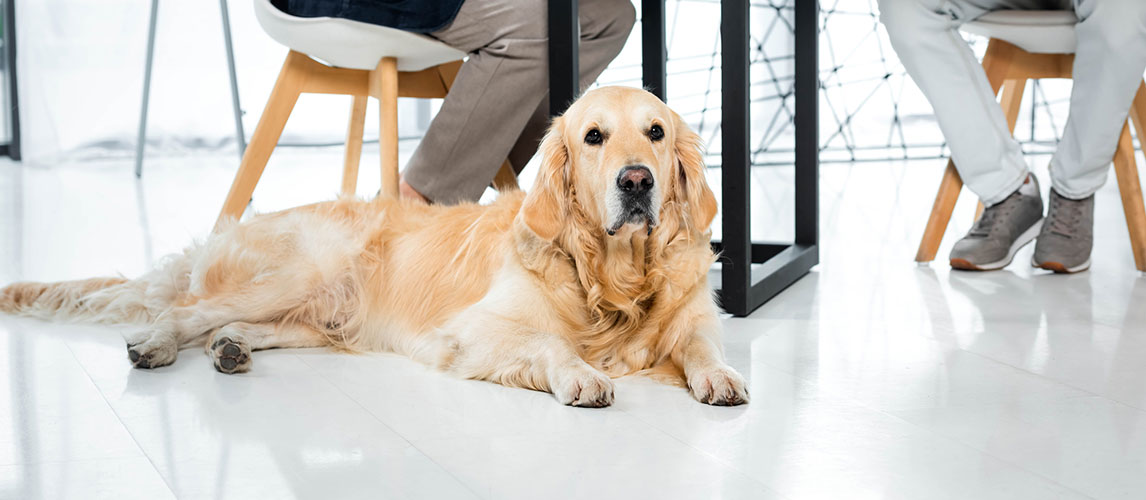The most common misconception with dogs is that all canines only have fur, but interestingly there are dog breeds that have what would be classified as hair, not fur. The interchangeable use of the terms “dog fur” and “dog hair” have led to the belief that they are one and the same, though they are in fact quite different on several accounts. So to answer the question of “do dogs have hair or fur?” In this article, we have broken down the distinguishing features between the two and the science detailing the difference between hair and fur on dogs.
The Difference Between Hair and Fur on a Dog
There are in fact several differences between a dog’s coat depending on whether it consists of dog hair or dog fur. This is one of those questions that pet lovers have generally pondered for quite some time, and for those who have a genuine interest in knowing how the two differ, here is our breakdown of the differences between pet hair and pet fur.
The Number of Hairs From a Single Follicle
Associate professor of veterinary dermatology and immunology at the Louisiana State University School of Veterinary Medicine, Dr. Cherie Pucheu-Haston, has stated that a key way to distinguish whether or not a dog has hair or fur is to count the numbers of hair coming from a single hair follicle.
“People will use the term ‘hair’ for animals that have ‘simple’ hair follicles, which means only one hair exits per hair follicle opening. This includes many cattle, horses, and humans,” says Dr. Pucheu-Haston, speaking with Paw Culture. “In contrast, the term ‘fur’ is often used for animals that have ‘compound’ hair follicles, this is where multiple hairs emerge from the same hair follicle opening. This encompasses dogs and cats.”
Primary, Secondary and Tertiary Hair
Dogs, unlike humans, have primary, secondary and tertiary hairs, therefore dog “hair” is triple-layered in a way that a human’s hair is not, making it dog fur.
Dr. Lara Sypniewski, a clinical associate professor of the Henthorne Clinical Professorship of Small Animal Medicine at Oklahoma State University, spoke with Paw Culture regarding the difference between dog hair and dog fur when it comes to layering, to provide additional information for pet owners on the subject.
“Most dogs have primary, secondary and tertiary hair. Humans only have tertiary hair, therefore we do not have fur,” Dr. Pucheu-Haston told Paw Culture. “Essentially, hair and fur are the same, [it’s just that] dogs have more layers.”
The Growth Cycle of Hair and Fur
One of the big differences between the two is actually their growth cycle. A hair coat grows to be much longer than fur and has a much slower growth cycle. Because the hair growth cycle is so much slower than fur, it actually sheds a lot less than fur as well.
Dog coats made up of fur will have an average growth cycle of around 130 days, in which the fur is either actively growing or in a rest phase, which takes place just before shedding season. During shedding season a dog will lose a lot of its fur very quickly, usually the undercoat(s), which will be replaced when the new cycle starts.
Dogs with hair, rather than fur, will shed their fur steadily and much less frequently throughout the year, very much like humans. Dogs with hair coats also don’t experience shedding seasons, as their growth cycle is much steadier than those with fur.
There are four distinct phases to a growth cycle:
- Anagen: This is the first stage of hair growth in which the hair follicles become active and hair or fur begins to grow.
- Catagen: Otherwise known as the transition phase, the hair or fur growth is on pause as the sheath of the root is attaching on the hair.
- Telogen: This could be seen as a rest phase, wherein the hair does not grow, nor does it die, but is inert and waiting for the final phase. The telogen phase is the time in which shedding is at its least.
- Exogen: Also known as shedding season. The hair or fur being to fall out and the cycle of growth begins anew. Dogs with thick undercoats will shed significantly more of their lower layers than those without. This phase tends to happen in the summer months as dogs start to lose their winter coats to make room for the lighter summer coat.
The key thing to take away from knowing the different stages of growth is that the main difference between the two growth cycles is; a dog with hair will experience a much longer anagen phase, resulting in less shedding, whereas a dog with fur have a shorter anagen phase and shed much more in comparison.
The Difference in Texture Between Hair and Fur
Pet hair is typically longer, smoother, and finer than pet fur. Hair coats can also be anything from curly to wavy, or even pin-straight, as you often see with breeds like the Shih-Tzu and Yorkshire Terrier.
There is also a difference in texture as a result of the number of layers a dog has; dog breeds with hair only have a single layer coat, whereas dogs with fur have two layers featuring an undercoat and a topcoat. The difference in layers gives a different feel to a dog because the undercoat often provides a softer, “fluffier” feel.
Does This Mean Dogs With Hair are Hypoallergenic?
First of all, we need to define what causes dog allergies in the first place. Is it often said that dogs with hair are better than dogs with fur when it comes to people with dog allergies because they shed less, therefore making them hypoallergenic breeds; this is in fact only a half-truth. Technically there is no such thing as 100% hypoallergenic breed dogs.
A dog allergy is defined by an allergy to certain protein chains and compounds that come from a dog’s skin, saliva, and other areas. Therefore an allergic reaction is caused by the spreading of minute scales of skin, otherwise known as dander. Dr. Michael Lorenz, a retired professor and dean of veterinary medicine at Oklahoma State University spoke with Paw Culture on this subject.
“Knowing humans are often allergic to dog proteins found in saliva and dander, a hypoallergenic hair coat is simply impossible,” said Dr. Lorenz.
Whilst it is true that dogs with hair shed less, and so it is easy to assume they do not spread dander as much, they do still go through the shedding process, and dander can become trapped in longer hair meaning when you agitate their hair by stroking then, you are more likely to release a higher amount of the dander allergen.
Dr. Lorenz said, “Owners can potentially reduce dander and shedding through good grooming practices, including routine brushing and bathing.”
Meeting a dog’s grooming needs is essential for keeping their skin happy and healthy, resulting in reduced dander and a much lower chance of an allergic reaction. Many people who struggle with dog allergies will have a dog with hair but keep on top of their dog’s coat length by trimming it short so as to avoid the dander becoming trapped.
Dog Breeds with Hair Coats
So now that we have established the difference between the two coat types, let’s take a look at a few of the better-known dogs that have a hair coat:
Large Breeds:
- Poodle
- Irish Water Spaniel
- Giant Schnauzer
- Xoloitzcuintli
Medium Breeds:
- Afghan Hound
- Wirehaired Fox Terrier
- Polish Lowland
- Bedlington Terrier
Small and Toy Breeds:
- Shih-Tzu
- Yorkshire Terrier
- Miniature Poodle
- Maltese
Dog Breeds with Fur Coats
Here are also a few of the fluffy dog breeds with fur coats that have thick fur coats and are more likely to cause allergic reactions, and shed heavily:
Large Breeds:
- Chow Chow
- Tibetan Mastiff
- Bernese Mountain Dog
- Great Pyrenees
Medium Breeds:
- Samoyed
- Border Collie
- American Eskimo Dog
- Husky
Small Breeds:
- Pomeranian
- Volpino Italiano
- Japanese Spitz
- Icelandic Sheepdog
Conclusion
Dogs with a hair coat have a much longer growth period than those with fur, as well as only one layer compared to the thicker two-layered coat of dogs with fur, so you will usually find that dogs with hair require more trips to the groomers to be trimmed and looked after. Additionally, dogs with hair are not hypoallergenic, though they are the better choice for people with dog allergies.
Knowing the difference between the two may not be absolutely essential, but it is certainly helpful in understanding the grooming needs of your dog, as well as helping new owners decide which breed to go for if they have a family member who is sensitive to dog dander.
If you want to protect your furniture against both dog hair and dog fur, check out dog sofa covers, and pet comforters.
Source:
- Tammy Hunter, DVM, Coat and Skin Appearance in the Healthy Dog, VCA Hospitals









